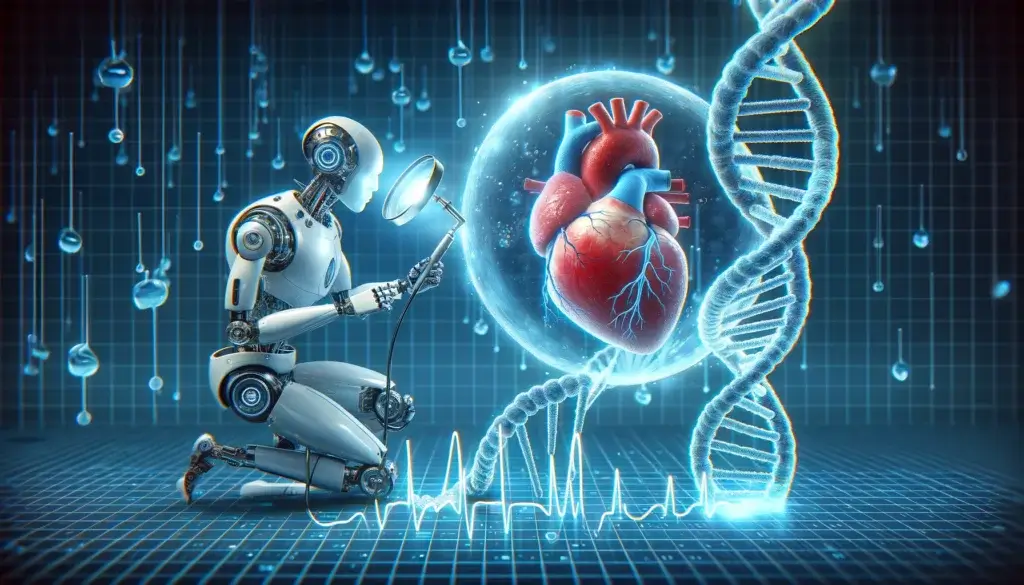Revolution in Heart Research: AI Sheds Light on the Genetic Blueprint of a Healthy Heart
The Intersection of Genetics and Cardiology
The human heart, a tireless pump keeping us alive, is a marvel of complex structure and function. But how much of this structure is predetermined by our genes? Researchers are investigating this question, and a recent study published in Nature utilizes artificial intelligence (AI) to explore the link between genetics and the structure of the heart’s left ventricle. This venture, rooted in the collaboration between the University of Manchester, the University of Leeds, the National Scientific and Technical Research Council in Argentina, and IBM Research in California, represents a significant stride in understanding cardiovascular health and diseases.
Unsupervised Learning Uncovers Hidden Patterns
At the core of this research is the use of unsupervised machine learning, a type of artificial intelligence (AI) that, unlike supervised learning, learns patterns and structures from data without being explicitly programmed. It allows them to identify previously unknown relationships.

In this case, the researchers fed the AI over 50,000 3D MRI scans of the left ventricle obtained from the UK Biobank database. The AI then analyzed these images, uncovering subtle variations in the ventricle’s shape and size.
Extracting Features and Unveiling Genetic Links
With the structural variations identified, the researchers conducted genome-wide association studies (GWAS) and transcriptome-wide association studies (TWAS). GWAS analyzes how specific locations on our DNA (genes) correlate with certain traits, while TWAS examines the relationship between gene expression and those traits.
These combined analyses revealed a significant breakthrough. The researchers pinpointed 49 new genetic locations with strong associations to the left ventricle’s morphology along with 25 additional locations with moderate associations. It is a significant leap forward in understanding the genetic basis of heart structure.
A New Frontier in Heart Research
Professor Alejandro F. Frangi, a leader of the study team, highlights the groundbreaking nature of this research. “This is an achievement that once seemed like science fiction,” he states. “We show that AI can be used to understand the genetic underpinnings of the left ventricle simply by analyzing 3D heart images.”

This approach offers several advantages over traditional methods. Previously, researchers relied on predefined clinical measures, potentially overlooking more nuanced variations in heart structure. The study was able to identify a broad range of structural features and their links to specific genes by using AI.
The Power of Big Data in Medical Research
The use of big data and AI in medical research is revolutionizing the way scientists approach complex biological questions. As noted by Professor Bryan Williams of the British Heart Foundation, this study exemplifies the transformative potential of integrating big data with machine learning. The ability to process, analyze, and interpret vast datasets is opening new avenues in cardiovascular research, leading to breakthroughs that were previously unimaginable.
The Future of AI in Healthcare
This research builds upon the growing role of AI in healthcare. Similar models have been used to create detailed 3D maps of organs, such as the human brain. This study takes it a step further, directly connecting specific genes to the structure of a vital organ. As AI technology continues to evolve, we can expect even deeper insights into the complex interplay between genetics and human health.
Towards a Future of Precision Medicine
The integration of AI and genetics in cardiac research is more than just a technical achievement; it represents a shift towards a future where medicine is personalized. As we solve the genetic complexities of the heart, the door to individualized healthcare becomes ever more open. This research not only sheds light on the heart’s genetic blueprint but also presents the partnership between technology and medicine, which promises to change our understanding and treatment of disease.
The next steps in this research will likely involve further investigation of the identified genes and their functional roles in shaping the heart’s structure. This knowledge could pave the way for the development of new diagnostic tools and potentially even gene therapies to address heart conditions with a genetic basis.




